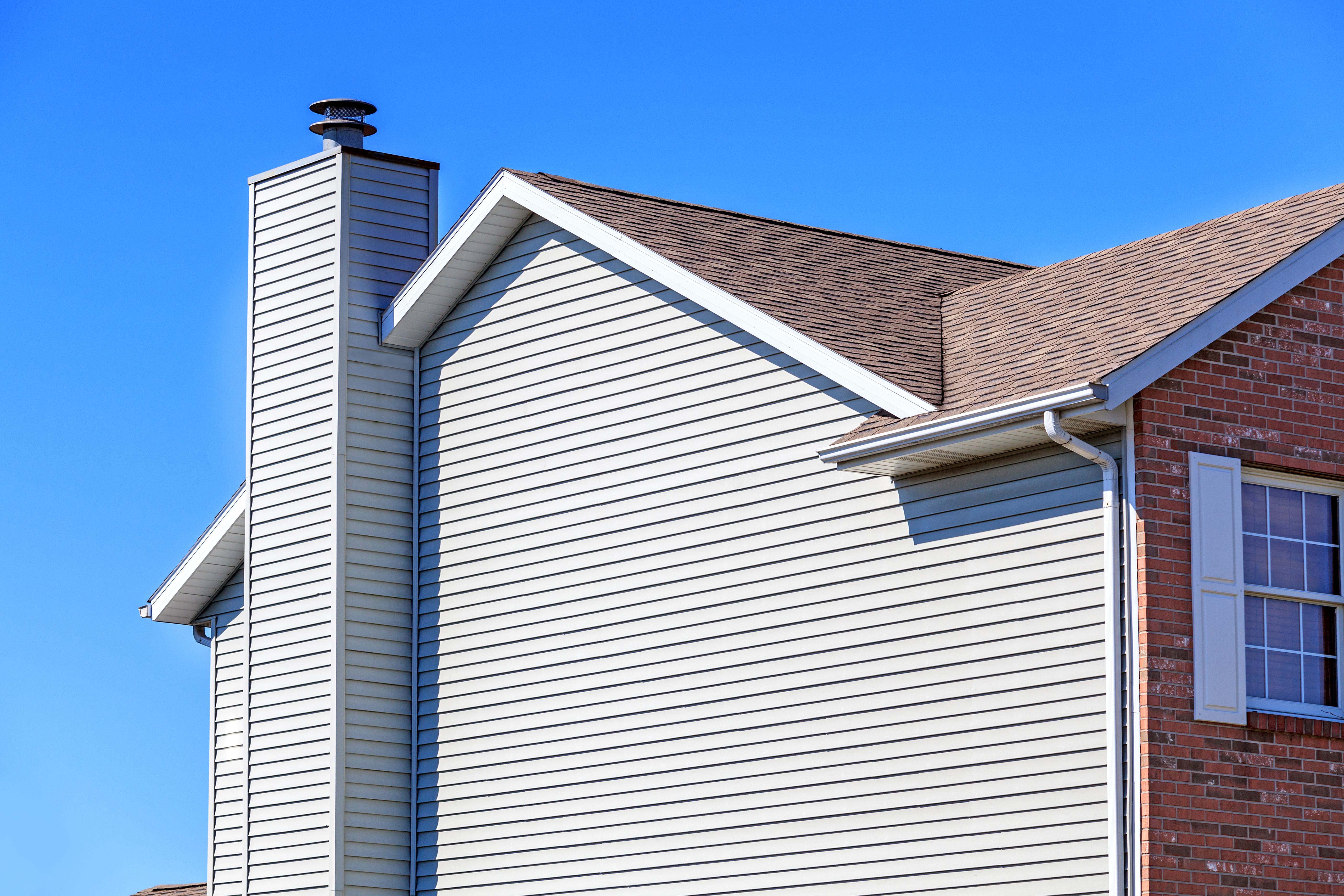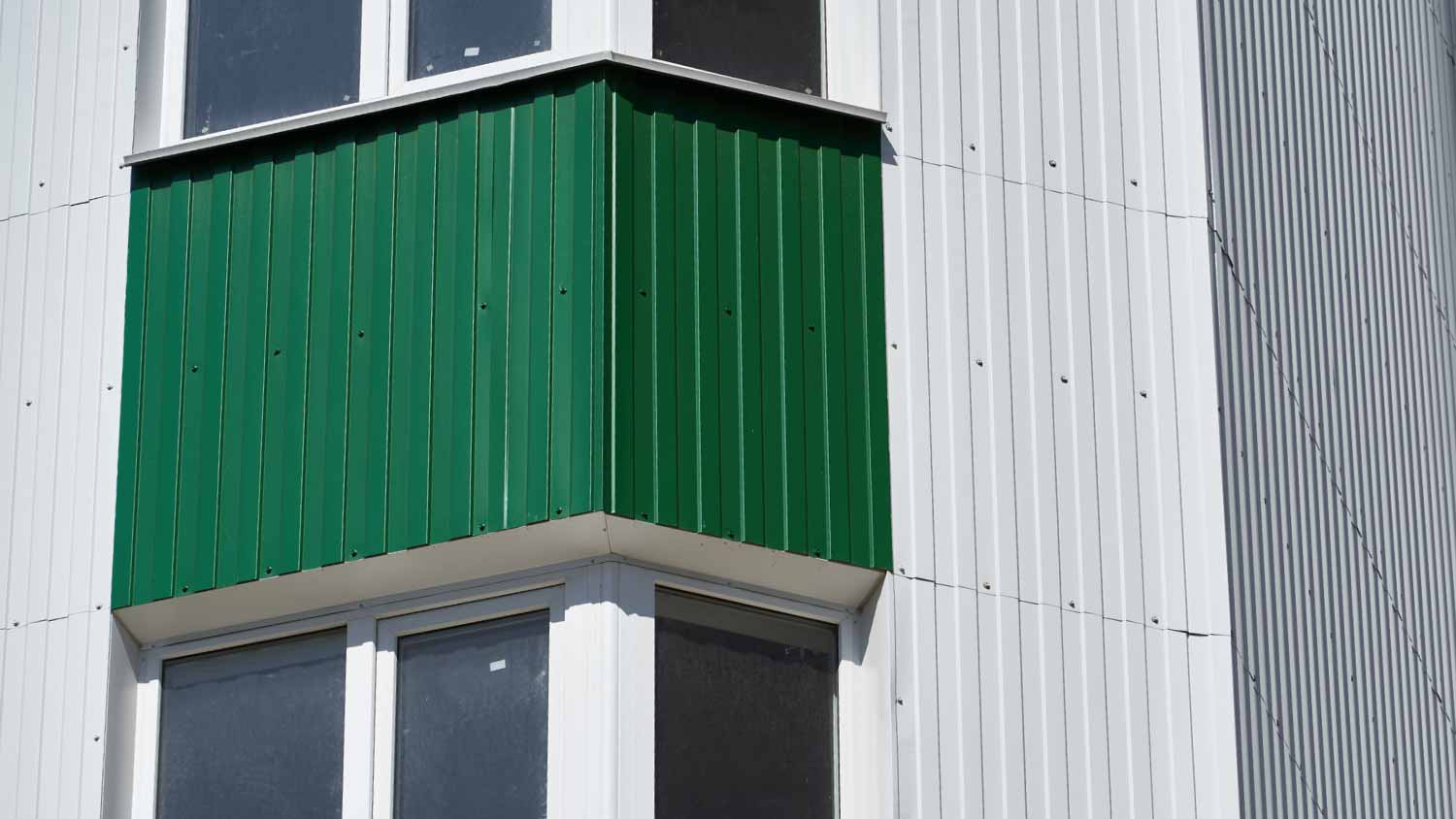
In addition to protecting against extreme Midwest temperatures, new siding in Columbus adds curb appeal. Learn about siding replacement cost in Columbus.
Is it time to side with steel?


Metal siding is usually made from steel, aluminum, copper or zinc
A low-maintenance option, metal siding is very durable and pest-resistant
Available in a wide range of colors and styles, metal siding can match many homes
Unfortunately, it is more expensive than vinyl and more difficult to install
Your siding needs to not only be functional—serving as your home’s protective shield and insulator—but should boost your house’s curb appeal. Many people might think of cold, silver slabs when they picture metal siding, but this material has come a long way. Now that its available in a range of colors and styles—sometimes even mimicking wood grain—it’s worth considering it as an option for your home. Review the pros and cons of metal siding and see if it’s the best siding choice for you.
Metal siding is a siding option made from metal panels that cover the exterior of a residential or commercial building. Sometimes called wall cladding, metal siding is often made from steel but can be produced with copper, zinc, or aluminum.
Metal siding first became available in the 1940s, but the metallic look was not popular with many homeowners. Fast forward to the 1980s when manufacturers started experimenting with embossed coatings, thus creating a wider range of looks—including ones that mimic wood grain—available, boosting metal siding’s appeal. Most metal siding produced today looks identical to vinyl siding—you might not be able to tell one from the other unless you were very close.

Let’s look at why metal siding is becoming an increasingly popular choice among homeowners.
Metal siding doesn’t absorb heat or moisture, making it very low maintenance. Most homeowners install it and clean it once a year without any other issues to worry about. Compare that to wood, which can rot, warp, or become a home to pests.
Metal is one of the strongest siding materials available. It can withstand all kinds of extreme weather, temperature shifts, and high winds. You can even purchase 53-gauge metal, which is even stronger than the standard 44-gauge metal siding.
Metal reflects the sun’s rays away from your home, keeping your home cool in summer and saving you money on your summer energy bill.
Many homeowners with metal siding don’t need to spray for termites and other creepy crawlies. Pests are not drawn to metal siding as they are to other materials—they can’t eat it or tunnel through it to build nests.
Steel and aluminum are two of the most recycled materials out there, so if you look for recycled siding, you won’t be contributing to any ecological imprint caused by new manufacturing. In addition, metal siding lasts a long time—40–70 years—and can be recycled again once you’re ready to replace it.
If you live somewhere prone to wildfires, metal siding could be an excellent option. The material is non-combustible and doesn’t catch fire easily, offering you superior protection and giving you peace of mind.
Over the decades, metal siding options have exploded. You can now buy metal siding in different styles and colors, some resembling wood grain.
Because metal siding is thicker than other siding materials, it’s inherently more soundproof, which comes in handy if you live in an urban neighborhood with lots of street traffic. You can also opt to insulate your siding to give it even more sound and temperature resistance.
Nothing is perfect. Here are the cons to metal siding, which you should consider carefully before committing to it for your home.
The cost of metal siding varies based on the type of metal you choose, but most of the more durable types will be more expensive than vinyl, stucco, or in some cases, wood. Expect to spend $4 to $16 per square foot for steel siding or $3 to $18 per square foot for aluminum, excluding labor fees.
While metal is very durable, it can still be dented by heavy objects, so it wouldn’t be a great option if your nephew loves to play catch and hasn’t quite nailed his hand-eye coordination. Sharp or pointy objects can also scratch metal siding.
If you live near the ocean, you should know that some metal siding—when exposed to humid, salty air—can rust. There are some metals that are approved for use if you live near the water, such as copper, stainless steel, and zinc.
Because metal is heavier than some other siding materials and thus more difficult to cut, it can be a pain to install. DIYers might want to hire a professional metal siding installer to take care of it.
| Pros | Cons |
|---|---|
| Very durable | Difficult to install |
| Pest and fire-resistant | More expensive than other options |
| Low maintenance | Prone to dents and scratches |
| Available in many colors and styles | Some metals can rust if installed near the ocean or other high-humidity environment |
When deciding whether metal siding is right for your home, consider the other siding material options on the market, such as:
Fiber cement: Strong and durable, fiber cement siding can last between 30 and 50 years, but does require repainting every 10 years.
Stucco: Another durable option, stucco can last up to 100 years. Unfortunately, its porous nature can absorb water, causing it to crack over time. It is also very difficult to install.
Vinyl: One of the most affordable siding options, vinyl can cost as low as $2 per square foot. It is less durable than many other siding options, though, and can crack in extreme cold or melt in extreme heat.
Wood: Everyone loves the organic, rustic look of wood, but it is susceptible to water damage and termites. It is resilient in many different temperatures, however, and depending on your manufacturer, can come from a sustainable source.
Metal siding might be an excellent choice if you need a durable, low-maintenance siding option. Because it is now available in a wide range of colors and styles, it suits many design preferences and is fire-resistant—a desirable trait if you live in a forested area with hot, dry summers. That said, it requires a higher upfront cost than vinyl and is difficult to install on your own—you’ll need to factor in the cost of professional installation.
From average costs to expert advice, get all the answers you need to get your job done.

In addition to protecting against extreme Midwest temperatures, new siding in Columbus adds curb appeal. Learn about siding replacement cost in Columbus.

Fiber cement siding is durable, fire-resistant, and affordable. Learn more about fiber cement installation costs in Columbus, OH.

New vinyl siding adds value and curb appeal to homes in Columbus, Ohio. Learn about average vinyl siding installation costs in Columbus, Ohio.

Picking between Hardie board and traditional cement board siding? Our comparison guide will help you decide.
.jpg?impolicy=leadImage)
Stucco that isn’t waterproofed leaves your home vulnerable to moisture damage. Learn four ways to waterproof stucco for the most protection.

Do you want to give your home a new fresh look? Check out these vertical siding options to figure out which type and style is best for your house.